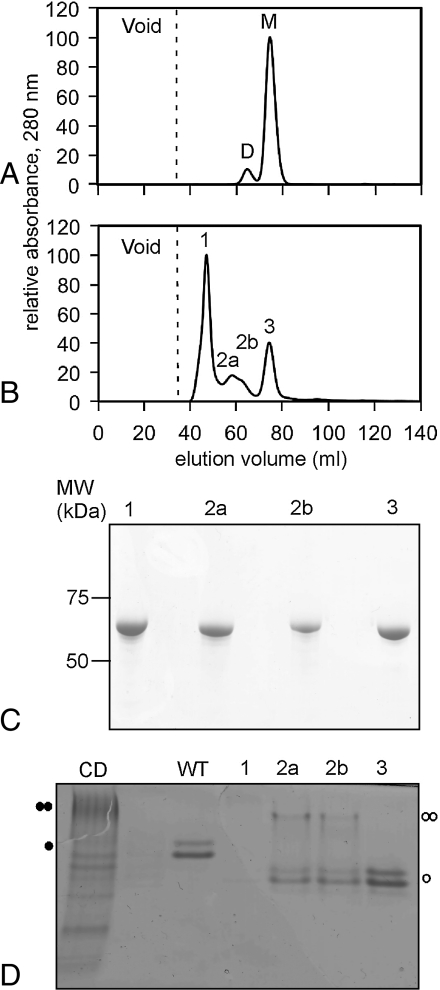Fig. 5.
Removal of the pertactin C-terminal cap leads to formation of soluble oligomeric species as determined by size exclusion chromatography. (A) Elution profile of the single cysteine pertactin mutant T490C: M, monomers; D, disulfide-bonded dimers. (B) Elution profile of the pertactin ΔC-terminal cap construct. Peak 1 elutes near the theoretical void volume of the column (dotted line), suggesting large oligomeric species. Peak 2 elutes at a position similar to the disulfide dimer shown in (A), while peak 3 corresponds to monomeric pertactin. (C) Chromatography results were corroborated with Coomassie-stained SDS-PAGE. Only ΔC-terminal cap was detected in each chromatography peak. Molecular mass (kDa) is indicated on the left. (D) Formation of oligomeric species was confirmed with Coomassie-stained polyacrylamide native gel electrophoresis. Lanes corresponding to the single-cysteine pertactin (CD), wild-type pertactin (WT), and samples from each chromatography peak are indicated. The migration positions of wild type monomeric pertactin (one closed circle) and the covalent dimer (two closed circles) are indicated. Bands corresponding to putative monomeric and dimeric species for the ΔC-terminal cap construct are indicated with open circles.

